From nanometer resolution to high-force actuation, components for linear motion systems are changing with the times.
Linear motion components such as encoders and actuators are evolving to meet the demands of new applications and industries. New demand in areas like medical devices, for instance, calls for more nimble, smaller components adaptable to new environments and performance standards.
This calls for more precise resolution of positioning systems, for encoders with nanometer resolution, or linear actuators capable of making small, precise moves with little force or on the other end of the spectrum high-force alternatives to more traditional technologies like hydraulic actuation.
But it’s also a different world for engineer design work. More designers are looking to source pre-engineered or integrated systems. Whether due to shortened design cycles, limited budgets or fewer engineering staff on hand, these factors are causing engineers to consider pre-engineered systems. And motion component manufacturers are aligning themselves to give designers more options by partnering with companies to simplify component sourcing and system design.
Innovation in linear-encoder designs
For applications where space is at a premium, encoders like NUMERIK JENA’s LIK 41 kit-style optical linear encoder is a suitable option. The scanning unit has a low height profile and the graduation carrier has two ways of mounting and is offered in various lengths. This flat linear encoder is a good fit for multiple industries, including semiconductor, medical, metrology and automation.
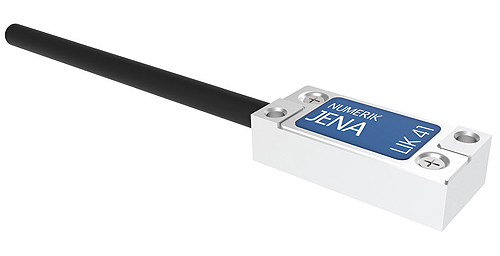
The encoder scales have a graduation of 20 µm with lengths up to 30 m. There are two ways of mounting the scale: singleflex and doubleflex. Singleflex is mounted directly to the machine axis with a specially engineered adhesive on the back. Doubleflex is the preferred method to mount a scale when high accuracy is required. A base metal layer is affixed to the axis of motion by a pin on the left side of the scale; an oil film and another metal layer with the graduation imprinted rests on top of the base metal tape.
The thin oil film allows for free thermal growth with low friction, yet the top metal layer does not fall away from the base tape due to a recommended fixing point at one location. Accuracies to ±1 µm are achievable with the doubleflex mounting arrangement. Reference marks are also imprinted on the scales in the middle, or every 50 mm, or by specific application requirements.
The scanning units on the LIK 41 are small with a height of 6 mm. They contain an electrical shielding scheme so they can be mounted close to motors in the application. The scanning units can be programmed once installed to the linear scale to maximize the signal quality and build in signal margin for long life of the machine operation. The scanning units output to either a 1-V peak-to-peak analog or TTL interface with resolutions down to 50 nm possible with the TTL (RS 422) versions.
But precision isn’t the sole design criteria for applications. Case in point: RSF Elektronik offers a linear motion feedback encoder system designed for machines with loose mechanical motion during operation. The MSA 37x series encoders are well suited for motion applications such as press brake and metal forming and bending machines, or similar types of machines that have significant flexure near the area requiring motion feedback.
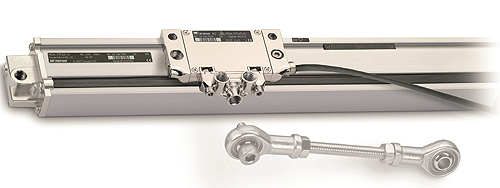
The encoders feature a design that includes a bearing set internally for guiding the scanning optics, and a bearing set externally for the attachment of a coupling rod that affixes to the machine, thereby allowing for measurement of the moving elements of the machine.
Digital TTL resolutions of 5 and 1 µm are possible, with accuracies up to ± 10 µm on the MSA 37x series. The encoders also have magnetic limit switches that can be used to send end-of-travel signals to a controller. Reference marks can be in the center, on either end of travel, or every 50 mm. The encoders can also handle large shock and vibrations.
Linear actuation now with high-force options
Linear actuators are also evolving. From higher force options that continue to challenge traditional hydraulic and pneumatic systems to novel technologies such as single devices capable of producing both linear and rotary motion, designers have a lot more choices available to them.
For instance, the new XFC Series electric cylinder from Parker’s Electromechanical Automation Division features maximum thrusts to 80,000 lb. The secret of the XFC lies in the integrated roller screw technology, which uses planetary rollers in place of the ball bearings used in ballscrew products. The advantage of planetary rollers is that they provide a greater number of contact surfaces between the thread of the screw and the internal threads of the roller nut. This equates to higher overall load capacities, higher speeds, and shock loading capabilities.
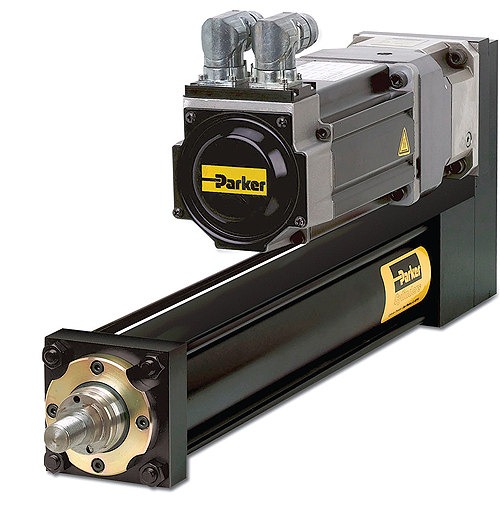
The high thrust capability coupled with the all-steel frame based on standard metric hydraulic cylinder construction provides a seamless migration from hydraulic to full electromechanical motion and delivers a cleaner and more energy-efficient solution overall with increased levels of control.
On the motor front, an innovative motor concept combines linear and rotary motion into one compact package.
The PR01 Series of linear-rotary motors from LinMot can be used to implement a range of combinations of linear and rotary motions. The housing contains both an electromagnetic linear drive and a rotary direct drive, each controlled by a servo drive. This means that the upper-level controller can implement dynamic linear-rotary motion sequences that can be programmed to be either synchronous or completely independent of each other.
Currently two sizes are available that differ in the maximum available torques for the rotary motors and the linear forces for the linear motors. Other options include variations with gearboxes, hollow shafts and stainless-steel components.
When it comes to applications where space is at a premium, such as many medical applications, component manufacturers are responding with designs that fit in smaller tighter spaces, weigh less, yet don’t sacrifice precision or accuracy.
One example comes from PBC Linear in their low-profile linear guide system called the Compact Series. This addition to the company’s Mechatronics Enabled initiative is designed to provide smooth, accurate and repeatable linear motion in tight spaces. With a 23-mm standard height and the flexibility to be configured to adapt to the demands of a given application, the linear guide system is a good fit for applications in lab automation, medical, automated delivery systems, dispensing robotics and electronic board manufacturing.
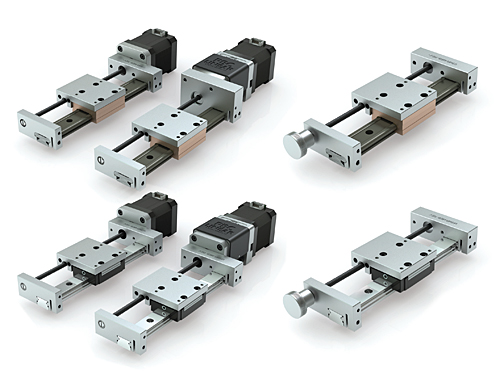
The product line offers options including bearings, leadscrew diameters, nut types such as standard fixed nuts or anti-backlash nuts and different motor frame sizes such as NEMA 17 or 23 stepper motors.
Simplifying linear-motion design
One constant in engineering design, besides concerns with costs and timing, is the quest to simplify the design process. In other words, engineers welcome anything that makes their jobs easier. One strategy that some companies are adopting is to work more closely together, forming strategic partnerships to offer designers one-stop shops for sourcing components.
For example, engineers can specify Tolomatic electric rod actuators and rodless electro-mechanical actuators using Rockwell Automation’s Motion Analyzer web-based software, making it easier for engineering teams to specify, design and validate complete motion control systems that use Allen Bradley controls.
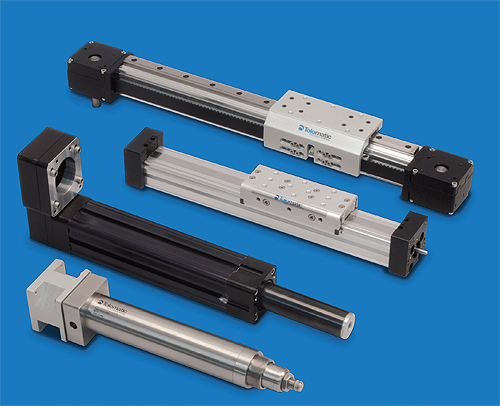
The Rockwell Automation mechatronic design tool is a cloud-based architecture that aims to help mechanical, electrical and controls engineers collaborate more efficiently and effectively to create prototype machines. The interdisciplinary design approach can help decrease time to market and reduce engineering costs.
Feature by Miles Budimir || Manufacturers mentioned in this piece: LinMot • www.linmot.com || NUMERIK JENA • www.numerikjena.de || Parker Electromechanical Automation Division • www.parkermotion.com/XFC || PBC Linear • www.pbclinear.com || Rockwell Automation • www.rockwellautomation.com || RSF Elektronik • www.rsf.at || Tolomatic • www.tolomatic.com || Reprint info >>

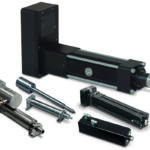

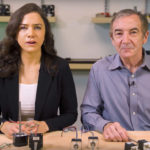


Leave a Reply
You must be logged in to post a comment.